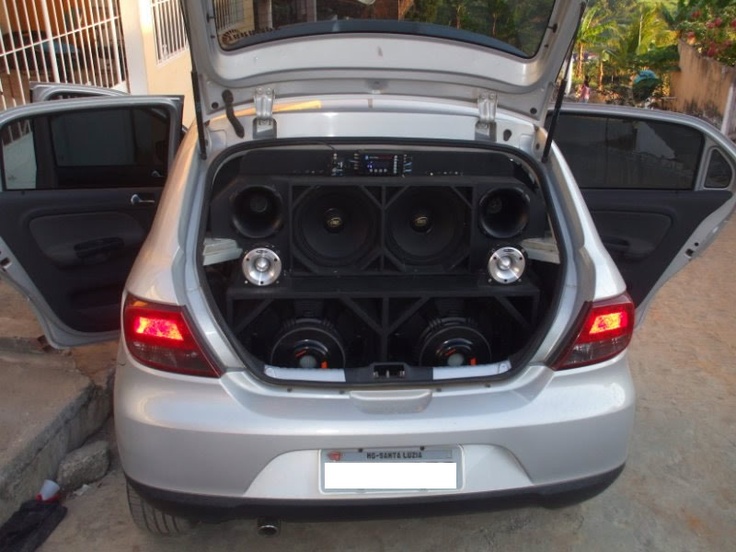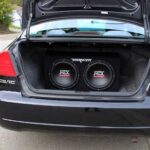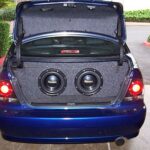To isolate a subwoofer from the floor, use rubber pads or isolating feet. A well-isolated subwoofer reduces vibrations.
(This Portion is for Feature Snippet)
Are you looking to enhance the performance of your subwoofer and ensure a more precise sound quality? Isolating your subwoofer from the floor can make a significant difference. To achieve this, you simply need to use rubber pads or isolating feet beneath the subwoofer.
By incorporating these simple adjustments, you can effectively minimize vibrations and disturbances caused by the interaction between the subwoofer and the floor. This not only improves the overall sound quality but also prevents unwanted resonances and ensures a more immersive audio experience.
Why Isolating Your Subwoofer Matters (h2)
Reduces Vibrations (h3)
Isolating your subwoofer from the floor is crucial as it reduces vibrations that can interfere with the sound quality. Without isolation, the subwoofer transfers vibrations to the floor, causing distortions in the sound produced. By isolating it, you ensure that the vibrations are contained, leading to a clearer and more accurate bass response.
Improves Sound Quality (h3)
Isolating your subwoofer directly improves sound quality. When the subwoofer is connected to the floor, the vibrations generated by the speaker can distort the sound. Isolation prevents these vibrations from affecting surrounding surfaces, resulting in a cleaner and more defined bass output. This significantly enhances the overall audio experience and brings out the true depth of the low-frequency sounds. “`
Different Methods for Isolating Subwoofers
When it comes to setting up your home audio system, one of the crucial considerations is isolating the subwoofer from the floor. Proper isolation can significantly enhance the performance of your subwoofer by minimizing vibrations and ensuring cleaner, more accurate bass. The process involves different methods, each serving the purpose of isolating the subwoofer effectively. Let’s explore some of these methods.
Isolation pads are an effective and affordable solution to decouple the subwoofer from the floor. These pads are designed to absorb and dampen the vibrations, preventing them from transferring to the floor. Placing the subwoofer on isolation pads not only improves the bass clarity but also reduces the resonance that may affect the surrounding environment. It’s a simple and practical way to enhance your listening experience.
Creating An Isolation Platform (h3)
An isolation platform acts as a sturdy base that helps in isolating the subwoofer from the floor. By utilizing dense materials like MDF or plywood, you can construct a platform that effectively reduces the transmission of vibrations. Installing the subwoofer on this platform can make a noticeable difference in the overall sound quality, especially in rooms with hard flooring surfaces.
If you are inclined towards a hands-on approach, building your own isolation feet can be a rewarding project. By utilizing materials like rubber, cork, or sorbothane, you can create custom isolation feet that cater to your specific requirements. These isolation feet help in minimizing the direct contact between the subwoofer and the floor, thereby reducing the impact of vibrations on the overall audio performance.
Choosing The Right Isolation Method (h2)
Isolating your subwoofer from the floor is essential in achieving optimal sound quality. By choosing the right isolation method, you can eliminate unwanted vibrations and resonances, resulting in clearer and more accurate bass reproduction for an immersive audio experience.
Considering Your Subwoofer’s Weight And Size
Heavy subwoofers may require maintenance of the isolation method.
Ensure the isolated surface can support the weight of the subwoofer.
Check the dimensions to select appropriate isolation materials.
Evaluating The Room’s Acoustics
Assess the room size to determine appropriate isolation level.
Consider acoustic panels or room treatments for optimal sound.
Use bass traps in corners to minimize bass reverberation.
Preparing Your Subwoofer for Isolation (h2)
To effectively isolate your subwoofer from the floor, consider using isolation pads or spikes. These accessories help minimize vibrations, improving sound quality and reducing unwanted resonances. By elevating your subwoofer off the ground, you can achieve clearer bass performance in your audio setup.
Getting The Right Tools (h3)
Before you start isolating your subwoofer from the floor, it’s important to gather the necessary tools. Here are the tools you’ll need to prepare your subwoofer for isolation:
- Rubber isolation pads or feet
- Leveling tools, such as a bubble level or smartphone app
- Cleaning supplies, including a microfiber cloth and a gentle cleaner
- Double-sided adhesive strips or Velcro
Positioning The Subwoofer (h3)
The position of your subwoofer plays a crucial role in achieving optimal sound quality and isolation. Here’s how to position your subwoofer effectively:
- Find the ideal location: Place your subwoofer at least a foot away from the walls and furniture.
- Center it: Position your subwoofer near the center of your room. This allows the bass to disperse evenly.
- Height considerations: If possible, elevate your subwoofer off the floor using a stand or platform.
Cleaning The Area (h3)
To ensure proper isolation, it’s essential to have a clean surface beneath your subwoofer. Follow these steps to clean the area:
- Clear the space: Remove any objects or debris that could interfere with the subwoofer’s placement.
- Dust off surfaces: Use a clean, dry microfiber cloth to remove dust and dirt from both the subwoofer and the floor.
- Wipe down the area: If needed, use a gentle cleaner and a damp cloth to wipe down the floor beneath the subwoofer.
Remember, by utilizing the right tools, positioning your subwoofer correctly, and maintaining a clean area, you can maximize the isolation and enhance the bass performance of your subwoofer.
Using Isolation Pads (h2)
Using isolation pads is a great way to improve the performance of your subwoofer by minimizing vibrations and isolating it from the floor. Properly selected and placed isolation pads can significantly enhance the sound quality of your audio system.
Selecting The Right Type of Pads (h3)
When selecting isolation pads for your subwoofer, consider the weight and size of your subwoofer and the type of flooring in your room. Look for high-quality rubber, foam, or neoprene pads that are specifically designed for audio equipment. The pads should be durable, dense, and able to effectively absorb and dampen vibrations.
Placing The Pads Correctly (h3)
It’s crucial to place the isolation pads correctly to achieve the best results. The pads should be placed under each corner of the subwoofer to ensure even distribution of weight. Make sure the surface where you position the pads is clean and level. Additionally, ensure that the subwoofer is securely positioned on the pads to prevent any movement during operation.
Creating An Isolation Platform (h2)
Creating an Isolation Platform for your subwoofer is a crucial step in optimizing its performance. By isolating the subwoofer from the floor, you can reduce vibrations and improve sound quality. One effective way to achieve this is by building an isolation platform. Here’s how to do it:
Choosing The Right Materials (h3)
When selecting materials for your isolation platform, it’s important to choose ones that are dense and sturdy. Opt for materials such as MDF (medium-density fiberboard) or high-density foam that can effectively absorb and dampen vibrations. Additionally, consider using cork or rubber feet to further isolate the platform from the floor.
Building The Platform (h3)
Begin by cutting the chosen material to the desired size for the platform. Assemble the pieces and secure them using strong wood glue or screws for added stability. To enhance the isolation properties, consider layering the materials or adding additional damping materials such as acoustic foam or rubber mats to the platform.
Placing The Subwoofer on The Platform (h3)
Once the platform is constructed, carefully place the subwoofer on top of it, ensuring that it is centered and stable. Make sure that the subwoofer is not directly in contact with the platform to prevent any transfer of vibrations. Use the cork or rubber feet to support the subwoofer and create a gap between the subwoofer and the platform.
Building Diy Isolation Feet (h2)
When it comes to enhancing the performance of your subwoofer, building DIY isolation feet can make a significant difference. By isolating your subwoofer from the floor, you can reduce vibrations and resonance, resulting in cleaner and more impactful bass.
Gathering The Necessary Materials (h3)
To construct DIY isolation feet for your subwoofer, you will need a few basic materials. Here’s a list of what you’ll require:
- Isolation pads – These will act as the primary material for your isolation feet, absorbing vibrations.
- Adhesive – You’ll need strong adhesive to secure the isolation pads to the feet.
- Wooden blocks or dowels – These will serve as the base for the isolation feet.
Constructing The Feet (h3)
Now that you have the materials assembled, it’s time to construct the isolation feet. Follow these steps:
- Attach the isolation pads to the wooden blocks or dowels using the adhesive.
- Ensure that the pads are securely fastened and that the feet are level.
- Allow the adhesive to dry completely to ensure a firm bond between the pads and the wooden base.
Installing The Feet on The Subwoofer (h3)
Once the DIY isolation feet are constructed, it’s time to install them on your subwoofer. Follow these simple steps:
- Place the subwoofer on a stable surface.
- Position the isolation feet evenly under the corners of the subwoofer.
- Ensure that the feet are firmly in place and that the subwoofer is stable on its new isolation feet.
Fine-tuning Your Isolation Setup (h2)
After you’ve successfully isolated your subwoofer from the floor, it’s time to fine-tune your setup to achieve the best possible sound quality. Proper fine-tuning can make a significant difference in the performance of your subwoofer and enhance your overall listening experience.
Experimenting With Subwoofer Positioning (h3)
To start fine-tuning your subwoofer isolation setup, experiment with its positioning within the room. Move the subwoofer around to find the optimal placement that delivers the most balanced and impactful bass throughout the listening area.
Testing And Adjusting Sound Output (h3)
Once you have found the ideal position, conduct sound tests at different output levels. Listen carefully for any distortions, muddiness, or lack of clarity, and make necessary adjustments to the subwoofer settings, such as phase, crossover frequency, and volume, to achieve a well-integrated and seamless bass response.
Troubleshooting Common Issues (h2)
Subwoofer Rattling (h3)
Check the subwoofer’s positioning and adjust for vibrations.
Inspect the speaker cone for damage or loose parts.
Inconsistent Bass Response (h3)
- Verify that the subwoofer is correctly connected to the amplifier.
- Reposition the subwoofer to find the optimal bass impact.
Maintenance And Care for Isolated Subwoofers (h2)
To properly isolate a subwoofer from the floor, consider using isolation pads or stands. These devices help minimize vibration and enhance bass performance. Placing the subwoofer on carpet or utilizing heavy rugs can also reduce unwanted resonance. Regularly inspect and clean the isolation materials to ensure optimal performance and longevity of your subwoofer.
Regular Cleaning (h3)
Regular cleaning is crucial for ensuring the optimal performance and longevity of your isolated subwoofer. Dust and debris can accumulate over time, affecting the sound quality and potentially causing damage. To clean your subwoofer, follow these simple steps:
- Unplug the subwoofer: Before starting the cleaning process, make sure to unplug your subwoofer from the power source to prevent any accidents.
- Use a soft cloth: Gently wipe the surface of the subwoofer with a soft, lint-free cloth. Avoid using abrasive materials that could scratch the surface.
- Remove stubborn dirt: For stubborn dirt or grime, dampen the cloth slightly with water or a mild cleaning solution (avoid using excess moisture).
- Pay attention to vents and ports: Dust can accumulate in the vents and ports of the subwoofer, affecting its performance. Use a soft-bristle brush or a can of compressed air to carefully remove any debris.
- Check for loose connections: While cleaning, inspect the cables and connections of the subwoofer to ensure they are secure. If you notice any loose connections, reconnect them firmly.
Checking For Loose or Damaged Parts (h3)
Regularly checking for loose or damaged parts is an essential part of maintaining your isolated subwoofer. Over time, vibrations and usage can loosen components, potentially affecting the sound quality or causing unwanted rattling noises. Here are a few steps to help you inspect your subwoofer:
- Turn off the subwoofer: Before checking for loose or damaged parts, ensure the subwoofer is turned off and disconnected from the power source.
- Visually inspect the subwoofer: Look for any obvious signs of damage or loose parts. Check the speaker cone, surround, grille, and enclosure for any visible issues.
- Tap gently: To identify loose parts, gently tap different areas of the subwoofer and listen for any rattling or abnormal sounds.
- Tighten loose screws: If you discover any loose screws, use a screwdriver or Allen wrench to gently tighten them. Be careful not to overtighten, as this could cause damage.
- Seek professional assistance for major issues: If you notice any significant damage or experience difficulties in identifying problems, it is recommended to consult a professional technician who specializes in audio equipment.
Additional Resources (h2)
The main purpose of isolating a subwoofer from the floor is to prevent it from vibrating the floor and causing unwanted resonance or buzzing sounds. In addition to the techniques described earlier, there are a few additional resources that can help you achieve better isolation for your subwoofer.
Recommended Isolation Products (h3)
There are several products specifically designed to isolate subwoofers from the floor and minimize vibrations. These products help in decoupling the subwoofer from the floor, reducing the transmission of vibrations. Here are some recommended isolation products:
- Isolation pads: These are thick rubber or foam pads that sit between the subwoofer and the floor, providing a barrier against vibration transfer. They come in various sizes and densities to match the weight of your subwoofer.
- Isolation feet: These are small rubber or silicone feet that attach to the bottom of the subwoofer. They absorb vibrations and prevent direct contact between the subwoofer and the floor.
- Subwoofer platform: A subwoofer platform is a dedicated stand or shelf that provides isolation and helps in positioning the subwoofer at an optimal height. It absorbs vibrations and prevents them from being transferred to the floor.
Experts Tips and Recommendations (h3)
Experts in the audio industry have shared their tips and recommendations for isolating subwoofers from the floor. Here are some valuable insights to improve your subwoofer isolation:
- Ensure proper leveling: Make sure your subwoofer is level and stable to avoid unnecessary vibrations.
- Experiment with placement: Try different locations in the room to find the optimal position that reduces interaction with the floor.
- Use multiple isolation methods: Combining multiple isolation techniques, such as isolation pads and feet, can further improve the effectiveness of isolation.
- Consider room treatment: Addressing room acoustics by adding sound-absorbing materials can help reduce unwanted resonances and vibrations.
By utilizing these recommended isolation products and following the expert tips and recommendations, you can significantly enhance the performance of your subwoofer and enjoy cleaner, distortion-free bass.
FAQ
Can I Use Multiple Isolation Methods Simultaneously? (h3)
Yes, you can combine isolation methods like isolation pads and stands for better results.
Will Isolating My Subwoofer Completely Eliminate Vibrations? (h3)
While isolation methods help reduce vibrations significantly, complete elimination may not be possible.
Final Thought (h2)
Incorporating isolators help optimize subwoofer performance, extend its lifespan in vibration-free environment and enhance audio quality. Proper isolation methods such as using isolation pads or stands are key in reducing resonance. Elevating or decoupling subwoofers from the floor ensures clearer, more impactful sound output.
Choose the right method for your setup.






